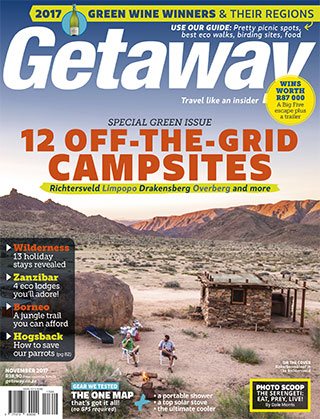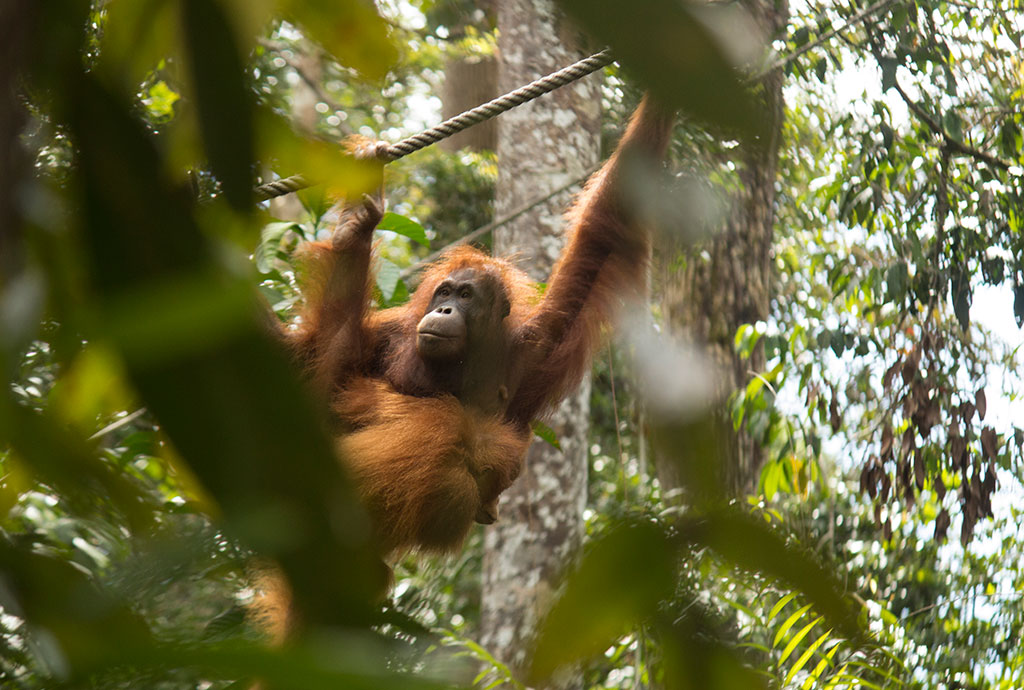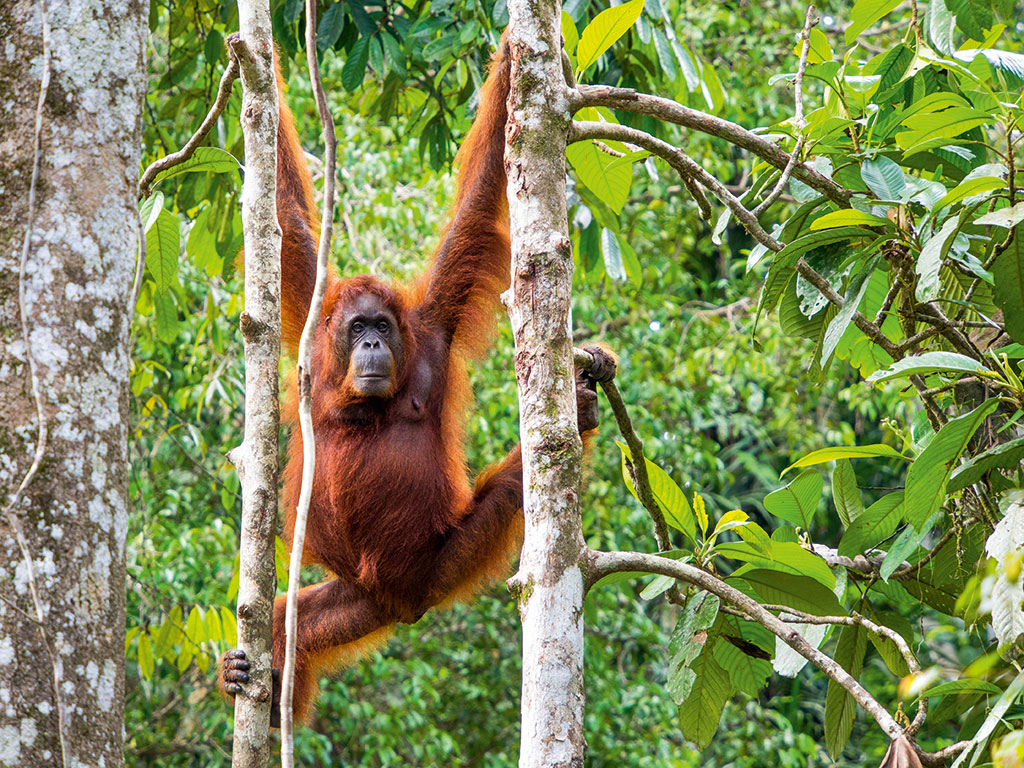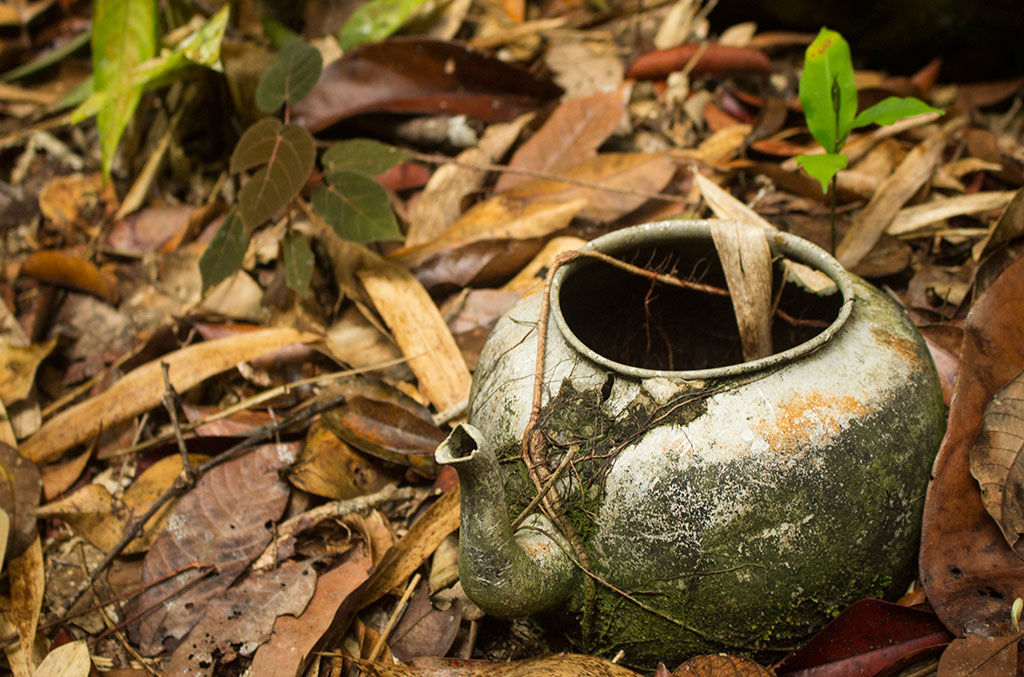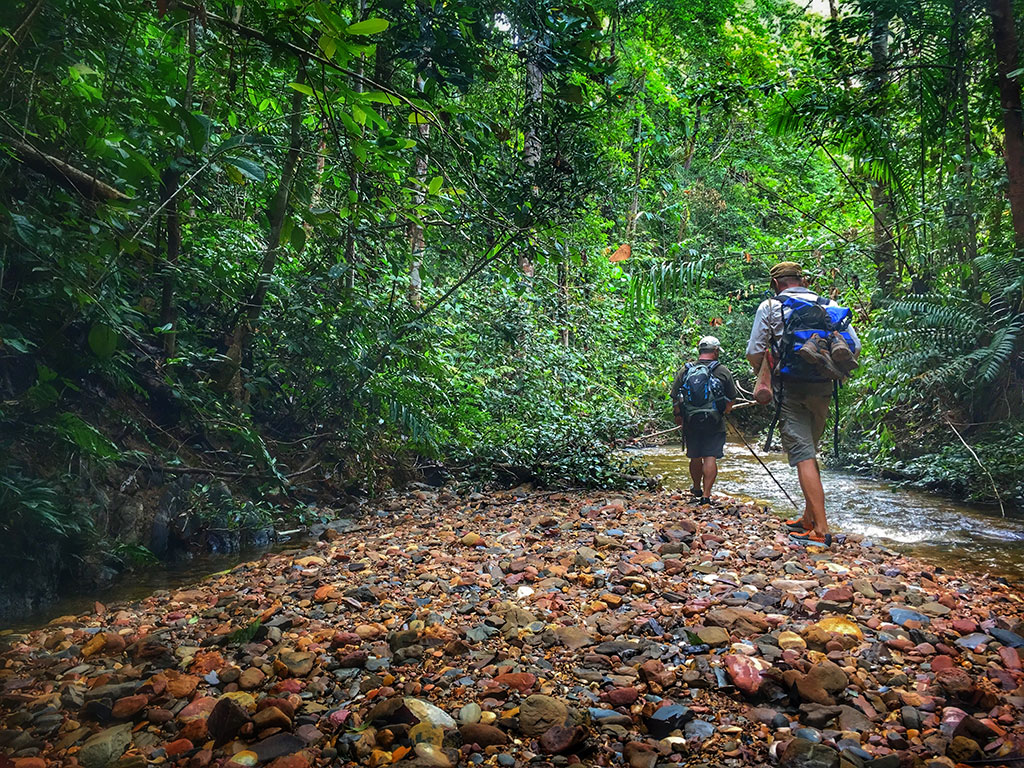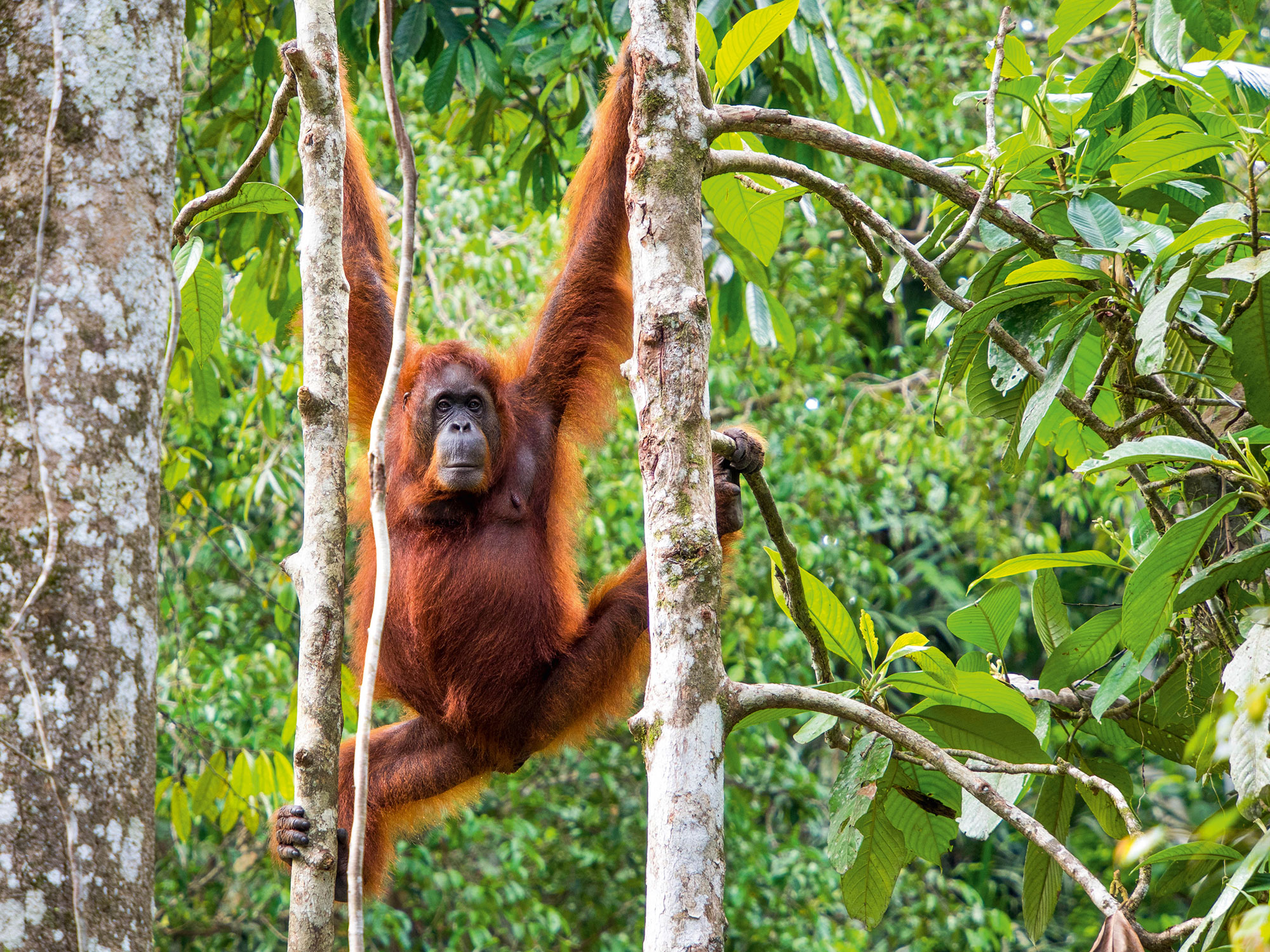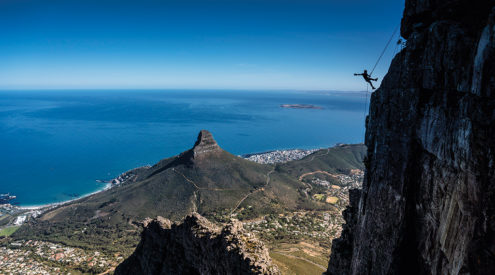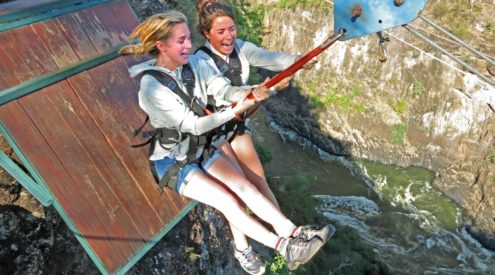Borneo’s jungles teem with life, and one of its greatest treasures is the orangutan. Searching for them is an experience you’ll remember forever.
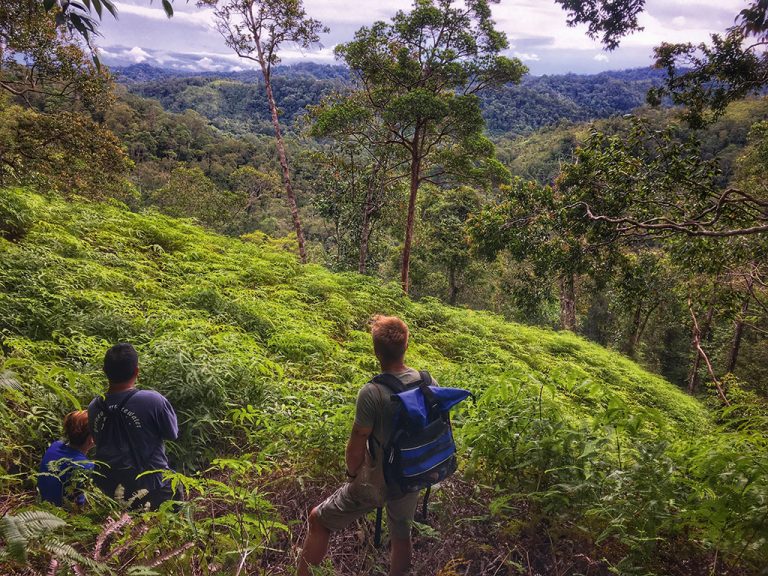
Parts of Batang Ai National Park were cleared for farming by the Iban people generations ago, and slowly the rainforest is returning. The orangutans are big fans of the fruit trees planted decades ago, and these are always good places to see the primates. Image by Narina Exelby
It’s dark out here in the jungled heart of Borneo, where a million leaves block almost all moonlight from reaching the forest floor. Great ironwoods and strangler figs stand guard around us, their branches gently stirring the noises of the tropical night.
‘When people tell stories it is up to you to decide if you will believe them.’ Bayang anak Penguang gazes into the night. ‘But this, what I will tell you now, is not a story. It is the truth – and I know this because my family has seen it with their own eyes.’
Bayang pauses to puff life into a smouldering cigarette and smoke trickles beyond the boundary of torchlight.
‘There once was a man called Aki Embah; he lived near here,’ our stocky wilderness guide continues. ‘When he became ill he said to his family, “Don’t be sad when I die because I will return as something else.” Well, a few days later he did die and, as is tradition here, the old man’s body lay for three days before burial. On the first day it started to grow hair, and on the second day more and more red hair. And on the third day he got up and walked into the forest – as an orangutan.’
Our three Iban porters nod; they know this tale well. Bayang’s eyes narrow as they drill into mine; ‘You Westerners would never believe this,’ they seem to say. He hunches forward and his voice, low, insists: ‘People have seen him. Many times! They have seen an orangutan wearing Aki Embah’s kandi, the pouch placed around his neck when he died.’

Batang Ai National Park has the highest orangutan population density in central Borneo. Image by Narina Exelby
For a few moments more Bayang’s eyes challenge mine, then he tap-tap-taps the base of his lighter on our camp table. ‘This is not a story,’ he says, reaching for his coffee. ‘This is the truth.’
While Peninsular Malaysia dangles at the southern-most tip of mainland Asia, almost two thirds of the country’s land area stretches over two states on the island of Borneo: Sarawak in the north-west and Sabah in the north-east. Batang Ai National Park is in Sarawak and it borders Indonesia, forming part of a transnational protected area roughly half the size of Kruger National Park. It is on the fringes of this park, among rumpled ridges and a squiggled network of fast-flowing streams, that we have been walking. Our mission: to see orangutans in the wild.
Orangutans are native to Borneo and Sumatra and despite their status as a protected species, their population continues to be threatened by habitat loss, illegal trade and hunting. Here around Batang Ai, however, the population is healthy – largely due to folklore rather than international law.
For four centuries this area has been home to some of Bayang’s tribe, the Iban, who were once the most feared headhunters in Borneo. Iban people don’t necessarily like orangutans – a maias near a longhouse is considered a bad omen – but for as long as anyone can tell, it’s been taboo to kill one. Iban culture is shaped by complex beliefs and rituals; to disrespect a taboo could have dire consequences.
The torchlight at our table is dimming and one of the porters leaves to sprinkle salt around the perimeter of our camp. To prevent snakes from entering, he says. He’s grown up a hunter and will head out tonight to catch frogs or a terrapin to take back to his family.

The Iban Transport. Image by Narina Exelby
‘We will never harm orangutans because we believe they are our friends,’ Bayang assures us, and I recall a story about an orangutan that acted as midwife when a woman went into labour in the forest. ‘We know that if we get lost maias will show us what to eat and how to get home. This is how it is in Batang Ai.’
It’s a remarkable area, host to an eclectic collection of flora and fauna. The forests here have plants with leaves bigger than a man’s torso. There are more than 1000 species of trees and 17 types of babbler; the official figure of 52 species of frogs has increased since frog experts from France (true story) recently discovered another five in this area.
In this rainforest there are gibbons and langurs, macaques, tarsiers and slow lorises. There are branches weighed down by so many bromeliads and mosses and ferns that the trees themselves sometimes become invisible. Rhinoceros hornbills – messengers, the Iban believe, between men and the gods – swoop above the lowland dipterocarp canopy while below, great argus pheasants meticulously clear their dancing grounds. In this forest there are tree trunks so broad it could take four people stretching from fingertip to fingertip to circle them, and there are delicate streams that shimmer over pebbles, gathering strength until they join to form the great waterways that have always been the main highways of this island.

The grave of an Iban ancestor- it is customary to offer the dead a cigarette before you light your own. Image by Narina Exelby
Our camp tonight is a simple structure alongside one of these streams. It’s beautifully remote. To get here we took a longboat two hours upriver from Batang Ai Dam and then walked five hours from Nanga Sumpa longhouse, all the way gazing up for telltale signs of fresh nests, because orangutans make new ones each evening. Every time we neared an old fruit tree – planted generations ago by Iban – Bayang searched the canopy. He would also sniff the air. You can always smell their pee, he’d said in a place where the fresh forest scent was particularly tangy.
We walked alert, careful to observe Bayang’s warning: ‘You should never say out loud that you want to see an orangutan,’ he’d cautioned as we passed the last of Nanga Sumpa’s steep rice fields. ‘If you say it you won’t see one. You can have hope inside you, but don’t say it out loud.’
The trail led us over ridges, across streams and deeper into the humidity of a forest that dwarfed us, and we’d stop regularly to pluck leeches from our limbs. During these breaks Bayang schooled us on which plants we could eat, which ones were used for medicine, what plants to avoid and which ones would give men – Bayang made a fist and flexed his bicep – strength. He also detailed some of the taboos that shape Iban life: if you sneeze more than once, stay safely at home; if a kingfisher crosses your path from the left be aware – that’s another bad omen; if a trogon calls from your right when you enter the forest, know that all is well.
I didn’t say anything out loud and so maybe it’s true – or perhaps it’s just coincidence: mid-morning we heard branches cracking overhead. And there, high up in a tree, swung one of the lanky-armed apes we’d so desperately wanted to see. She eyed us as intently as we watched her, making loud kissing noises and effortlessly breaking branches to throw at us – branches as thick as my arm. Although orangutans share 97 per cent of humans’ DNA, they have seven times the strength we do.
Further down the trail there was more crashing: another orangutan, this time with a baby clinging to her belly and a juvenile swinging between branches above her. By the time we reached our camp we’d seen five orangutans, and late that afternoon while I washed my body of sweat and the dried blood left by leeches, orangutan number six was building his nest in a tree above me at the curve of the cold stream.
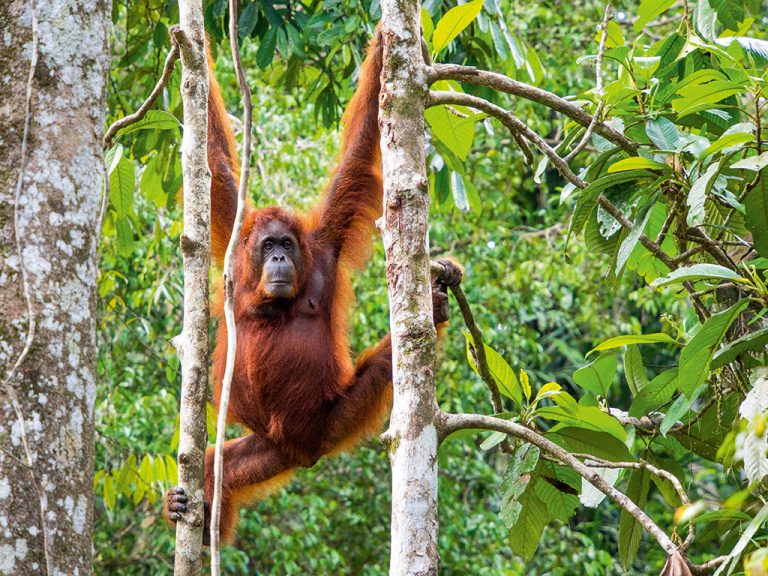
Orangutans, one of the largest primates, are close living relatives to humans. Image from iStock.
As Bayang said, it’s up to you to decide if you will believe a story. But what I am about to tell you isn’t a story, this is the truth: it’s tales like the ones about Aki Embah and the orangutan midwife that keep the red apes of Batang Ai alive. I know because I have seen them with my own eyes.
Can’t go to the jungle?
Visit these legit rehab centres. Travellers can visit two responsible wildlife rehabilitation centres within 40 minutes of Kuching, the capital of Sarawak.
1. At Matang Wildlife Centre you’ll see,close up but in cages,orangutans that can’t be reintroduced to the wild (those that grew up smoking cigarettes and riding bicycles).
2. At Semenggoh,orangutans are free to come and go as they please. There are feeding times and, if the orangutans choose to be there, you’ll see them fairly close up.
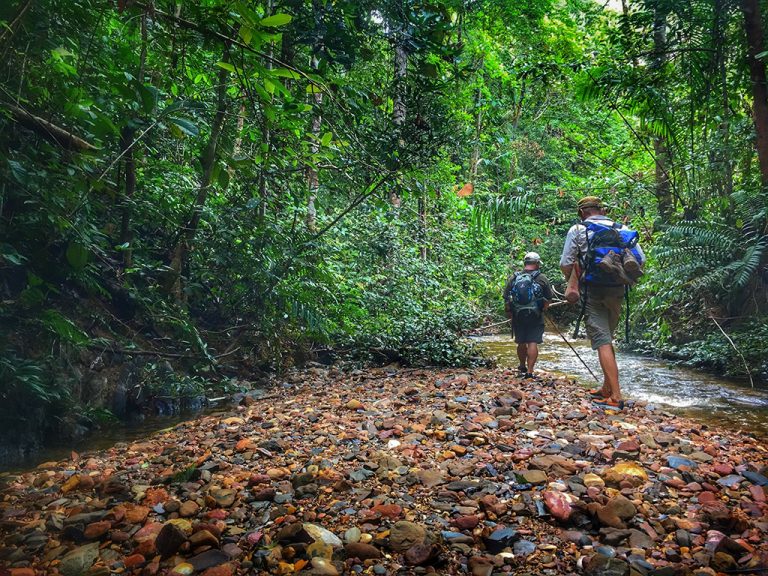
It’s very rare that orangutans leave the trees so be prepared to look up, a lot! Image by Narina Exelby
Plan your trip to Borneo
Getting there
Ethiad Airways flies from Joburg to Kuala Lumpur (with a stopover). From R7000 return. etihad.com Kuching in Sarawak is a short flight (under two hours) from Kuala Lumpur on AirAsia. From R1000 return.
When to go
Borneo is hot (27 – 32 ̊C during the day) and has 80% humidity year round. I went in February, but the best time to travel around Sarawak would be during the dry season, between April and September.
Need to know
South Africans do not need a visa for tourist trips to Malaysia. The currency is the Malaysian ringgit (MYR). It’s likely that you’ll come across leeches, particularly during the rainy season. They’re harmless, but wear leech socks if you think they’ll bother you.
What to pack
Take lightweight, quick-drying clothes and a poncho – it’s more comfortable to wear than a raincoat because of the humidity. Take trail shoes, and also water shoes for walking in streams (you can buy them at local markets for R30–your guide can help with this). Flip-flops are good for wearing around camp. Also pack a torch, towel, insect repellent, earth-friendly soap, rehydration sachets and a water bottle. Use a waterproof bag if possible (transport is by boat). You can leave luggage at Nanga Sumpa and take a smaller pack on your jungle trek (you will be carrying your clothing and water; porters carry all other supplies). Bring cash (there is no ATM) to buy local crafts such as woven rattan baskets and mats sold at Nanga Sumpa.
Guided trip
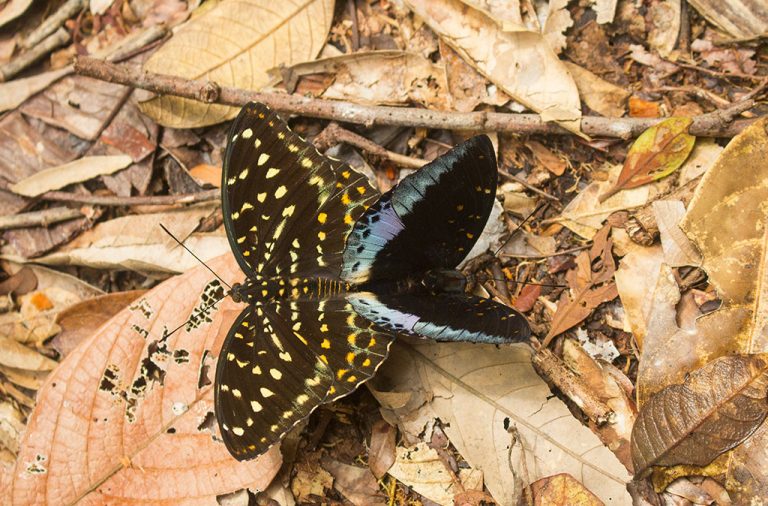
You can enjoy smaller creatures too–there’s a staggering diversity of wildlife here. Image by Narina Exelby
I went with Borneo Adventures, which offers various guided trips in and around Malaysian Borneo. I was on the five-day, four-night Red Ape Trail, which included being picked up in Kuching and driven to Batang Ai Dam, and then a longboat ride to Nanga Sumpa village. The first night’s accommodation is at rustic Nanga Sumpa Lodge, which has a lovely view of the river. The following day we walked into the rainforest and spent two nights at a very simple camp before returning to Nanga Sumpa for the fourth night. In the village, I spent time at the Iban longhouse, where we were able to watch women weaving and sit out on the ruai, the long communal front porch, and chat with the people who live there. We also explored the forest and river around the village. The trail cost R7000 per person, including meals and transport.
This story first appeared in November 2017 issue of Getaway magazine.
Our special green issue features the best off-the-grid campsites, fantastic holiday stays in Wilderness, an affordable jungle trail in Borneo, incredible eco-lodges in Zanzibar and our Green Wine Guide is finally out with winners!
